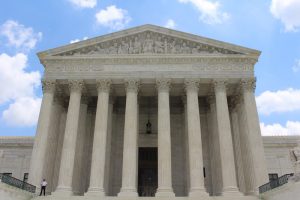
Respondeat superior or negligent hiring? Why not both?
On October 31, 2017, the Indiana Supreme Court decided the case of Sedam v. 2JR Pizza Enterprises. The background was that a Pizza Hut driver negligently caused the death of a person operating the scooter. The legal background was that the estate of the scooter operator wanted to hold the employer liable for the death. It sought to do so under two legal theories: 1) respondeat superior and 2) negligent hiring. Respondeat superior stands for the proposition that, if an employee negligently injures someone while acting in the course and scope of the employee’s employment, then the employer is liable for the damages caused. I have less experience with negligent hiring but, generally, the idea is that the employer isn’t being held vicariously responsible for the employee’s negligence but, instead, the employer is being held responsible for its own negligence in employing the person. This employee was a bad or reckless person who hurt someone because the employer put the employee in a position where the employee had an opportunity to do so.
The challenge here was to case law holding that, if an employer admits that the employee was acting in the scope and course of his or her employment, the victim cannot pursue both a respondeat superior and negligent hiring action. There is one injury and, if the employee was negligent, the employer is vicariously liable for it. Pursuing a negligent hiring action adds nothing to it.
So, if the victim is going to collect on the injury anyway, why pursue a negligent hiring claim? Or at least why do you care so much that you go to the Supreme Court seeking an opportunity? Or, from the other angle, if you’re the employer and you are going to be held liable anyway, why do you care which route the victim comes from?
I’m not involved with this case, so I can only speculate. But I think it has to do with the amount of damages that are ultimately awarded. The legal fiction is that compensatory (as opposed to punitive) damages are determined based solely on the injury sustained. The character or wealth of the person who caused the injury should have nothing to do with it. In this case, there was a death, and the damages should be based on that. The legal presumption is that it shouldn’t matter whether the person who caused the death was a sinner or a saint, a billionaire or a pauper. The injury is the same and the jury should calculate the damages the same regardless. (Plaintiff’s ability to collect on the damages is a separate matter.) Lawyers don’t really know what any given jury is going to do. But, the common wisdom of lawyers seems to be that, even with the same set of damages, a jury that’s mad at the tortfeasor will put a higher price tag on the damages than a jury that isn’t particularly mad at the tortfeasor.
In this case, if the jury mostly just hears that the employee worked for a pizza place and got into an accident, the damages awarded will probably be lower than if the jury hears about what a bad person the driver was and maybe hear some big numbers having to do with the profits Pizza Hut makes by reason of its cut-rate hiring practices. From reading the case, I believe the Plaintiff could pursue just the negligent hiring claim without the respondeat superior claim. But negligent hiring is tougher to prove, so I assume most plaintiffs will stick with the bird in the hand they have with respondeat superior.
This post was an excellent reminder of why I shouldn’t and won’t ever buy a a scooter.
This article was very help to me. The respondeat superior seems the “easiest” but does not go very far in exposing a negligent company, but the risk involved with showing evidence for the negligent hire is just that: risking. But I believe some of the same evidence and be used to show negligence that can be used to show punitive damages. But anyway thanks for the tutorial. It helped.